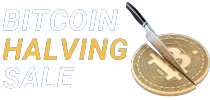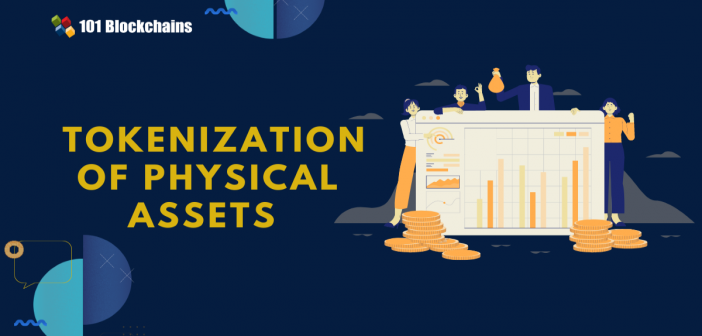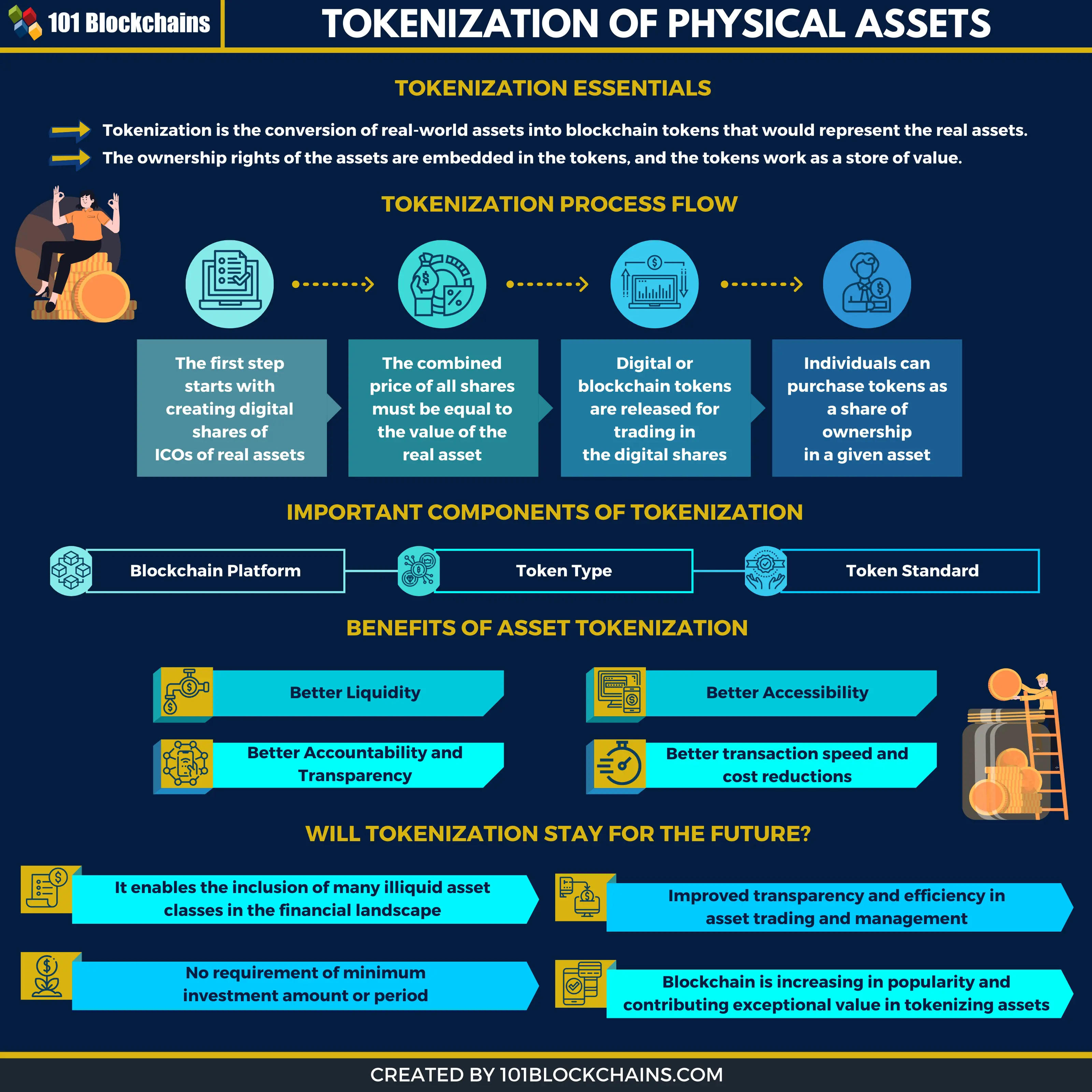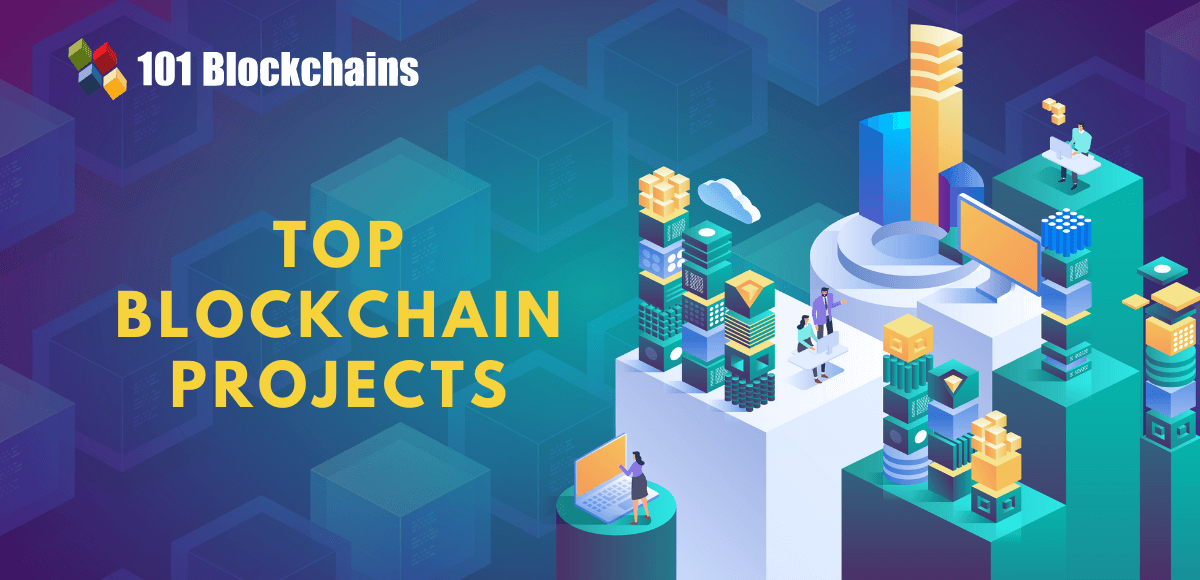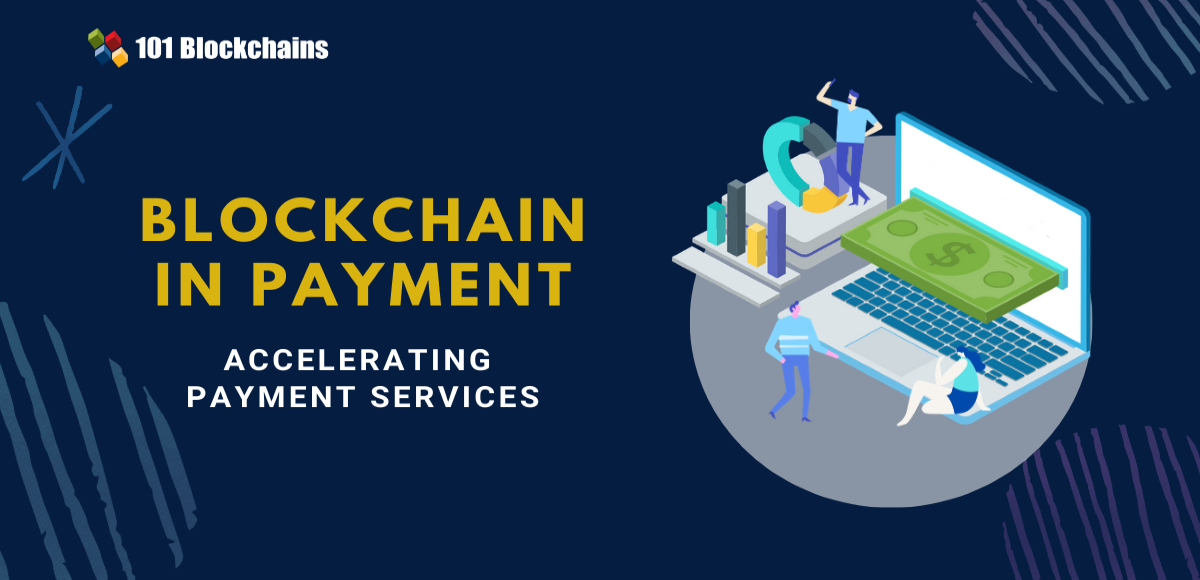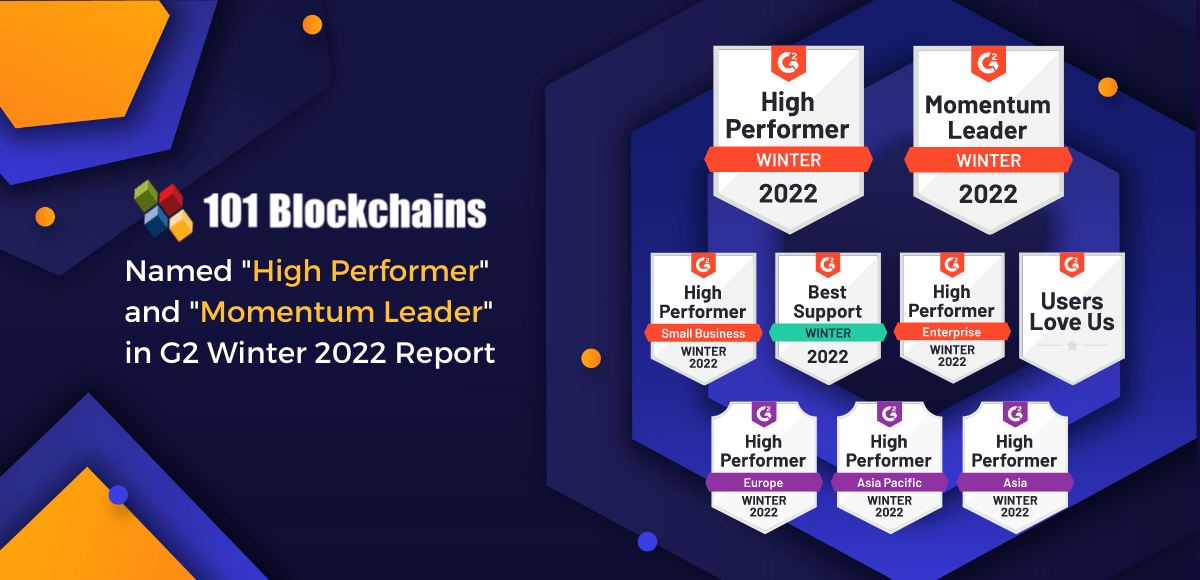Tokenization has transformed the fundamental approaches for investing and raising funds. Let us find out about the benefits of blockchain tokenization in detail with a reflection on real-world use cases.
The massive transition to a decentralized economy has birthed many new opportunities. Digital transformation is changing almost every aspect of the real world, starting from enterprise transactions to day-to-day activities such as grocery shopping. The arrival of blockchain has definitely brought the world closer to the dream of a cashless society. Imagine what would happen if assets are also represented digitally!
This is where tokenization comes into the picture. Many central banks have already started many digital currency projects of their own. At the same time, the digital business models are bringing physical goods as well as non-fungible assets, represented in the form of tokens on the blockchain.
These new tokenized assets are clearly establish the benefits of asset tokenization in the form of unlocking trillions of Euros worth of illiquid assets alongside the creation of revenue streams. So, will it have a prominent impact on the global economy? Or, is it the answer to achieving the economy of everything? Let us find out more.
Want to learn the fundamentals of tokenization? Enroll Now in Tokenization Fundamentals Course
Tokenization Essentials
The impact of tokenization is obviously transforming the whole financial industry, and enterprises must be ready for the change at all costs. Tokenizing assets could introduce fundamental changes in the approaches followed commonly for investing in assets. The process of tokenizing involves issuing a blockchain token, most probably a security token, as a representative of a real asset that can be traded.
Many people assume similarities between the benefits of blockchain technology and asset tokenization. However, tokenizing assets comes with a contemporary twist for uniqueness. The tokens are present on a chain and serve as a store of value alongside carrying rights of the assets represented by them. At the same time, the real-world assets represented by tokens continue to exist outside the chain.
Generally, tokenization involves the creation of a variant of the initial coin offering (ICO), also known as security token offering (STO). The STO is different from the other ICO variants such as payment, equity, or utility tokens.
Security Token Offering could help in creating a security token or a digital representation of an asset. The benefits of blockchain tokenization imply that it can provide a representation of share in a company, participation in an investment fund, or ownership of real estate. A deeper understanding of the process flow in tokenizing assets on blockchain could provide clarification regarding its role in transforming economy.
Build your identity as a certified blockchain expert with 101 Blockchains’ Blockchain Certifications designed to provide enhanced career prospects.
Flow of Process for Tokenizing Assets
The process of tokenizing assets with blockchain starts with the creation of an adequate number of digital shares with reasonable pricing. The combined price of all the digital shares must be equal to the value of the real-world asset being tokenized. Subsequently, the digital tokens are released for trading after the tokenization process.
In most cases, digital tokens are released by leveraging smart contracts through direct sales or on specialized exchanges. Any individual interested in complete or partial ownership of an asset could purchase their desired amount of digital ownership tokens. So, any individual purchasing ownership tokens would automatically gain partial ownership of a specific asset.
The process of tokenizing assets could also work for loan applications, especially with a real-world item serving as a pledge or guarantee. In technical terms, the process of blockchain tokenization demands comprehensive planning and selection of ideal technologies for working with. Most important of all, it is crucial to include the following factors in tokenizing assets,
1. Blockchain Platform
You would need an enterprise blockchain platform for issuing the token, such as a popular blockchain platform like Enterprise Ethereum or Stellar. These two options are the most notable alternatives when it is to tokenizing assets. In addition, users can also opt for creating a private blockchain for this requirement.
Start your blockchain journey Now with the Blockchains Fundamentals Free Course
2. Token Type
The next important requirement, which shows the benefits of asset tokenization, refers to the token type. With the concerns of the project objectives in consideration, you can select utility tokens for improving the accessibility of a product or service. On the other hand, you can also prefer a security token that offers ownership of the asset being converted.
3. Token Standard
The most crucial aspect in tokenizing assets refers to the token standard. The most generally used standard in Enterprise Ethereum blockchain development, i.e., ERC20, works as one of the most functional utility tokens.
However, ERC20 standard does not include features for restricted trading or forced transfers that are requested by security tokens. So, developers are more likely to opt for ERC-1400 as their preferred standard or from a wide variety of options, including ERC-1450 created by StartEngine, ERC-1404 created by Tokensoft, and SRC20 by Swarm Fund, among others.
It is also important to reflect on the fact that tokenization is more than just the common blockchain development process. On the contrary, the benefits of blockchain tokenization depend largely on the integration of payment gateways and AML/KYC systems. In addition, the process of tokenizing assets also involves the integration of blockchain security management, web, mobile apps, and other technology solutions. So, how far is it reasonable to look at a token economy in the near future? The answer to this question can be identified through reflection on the benefits of asset tokenization in detail. Let us find out more about the benefits of tokenization to find how the token economy can spell the future of the economy of everything.
Excited to learn the basic and advanced concepts of ethereum technology? Enroll Now in Ethereum Technology Course
Benefits of Tokenizing Assets
The token economy can present effective promises for introducing a financial world characterized by improved efficiency, inclusivity, and fairness alongside transparency in transactions for asset management. The use of tokens can help in reducing the friction associated with creating, purchase and sales of securities. The following benefits for sellers and investors with tokenization could show how the process can induce the economy of everything.
1. Improvement in Liquidity
The tokenizing process implemented in the case of private securities or commonly illiquid assets like fine art could help in trading the tokens on secondary market according to the choice of issuer. Therefore, it is easier to access a broader base of traders, thereby improving the possibilities of liquidity. As a result, investors could gain additional freedom, and sellers could achieve the benefits of liquidity premium with tokenized assets. So, sellers could get a better value from the tokenized asset easily. This is how tokenizing in blockchain trade finance solutions can help in regulating liquidity.
2. Transparency and Accountability
The facility of improved transparency is also one of the notable benefits of asset tokenization. The security token has the capabilities for embedding the rights and legal responsibilities of token holders directly in the token. At the same time, the security token would also feature an immutable record of token ownership for a specific asset.
Such features with tokenization could help in improving transparency in transactions. Tokenized assets could offer a clear impression of the party you are dealing with in a tokenized asset transaction, your rights and responsibilities, and the previous owners of the token. As you can see the benefits of tokenization closely resemblance blockchain features.
3. Better Accessibility for Investment Options
Tokenization could also play a crucial role in improving the accessibility of options for investment in assets. The lower minimum investment amount and period in the case of tokenized assets could reduce the barriers for entry of new participants in the asset management and trading landscape. The higher divisibility of the tokens is also responsible for implying that investors could purchase tokens representing excessively small shares of the tokenized assets.
With considerably cheaper orders and easier processing, there is no need to worry about high minimum investment amounts. In addition, the better liquidity available with security tokens can also lower down the minimum investment period. Investors could easily exchange their tokens on desired secondary markets available globally at all times, albeit with regulatory limits.
4. Faster Transactions at Lower Prices
The most important entry among the blockchain usage tokenization points out the possibilities of transactions at lower costs and faster speeds. The use of smart contracts in token transactions helps in automation of specific parts in the exchange process. Smart contracts serve as software algorithms integrate into a blockchain with trigger actions on the basis of specific pre-defined parameters.
The automation process can be helpful in reducing the overall administrative overheads, primarily with buying and selling. The reduction in the number of intermediaries can help in achieving faster execution of deals alongside lowering the transaction fees.
Will Tokenization Stay for the Future?
The advantages of tokenization outlined here are clearly applicable to the asset classes that are generally illiquid in nature. At the same time, the tokenizing of assets is ideal in cases where illiquid assets could gain benefits of better transparency and efficiency alongside reduced requirements of minimum investments. Two of the prominent areas which have considered the adoption of tokenized assets include real estate and the fine art sector.
However, there is no particular limit on the types of assets that you can tokenize. You can opt for different tokenizing types of assets, including real estate and art as well commodities and also virtual assets like securities. According to a detailed research report by the World Economic Forum and Deloitte, a major portion of the future economy would focus on tokenization of digital as well as physical assets.
In addition, the predicted growth in business value added by blockchain also paints a positive picture for tokenizing assets. Blockchain is all slated to contribute value add-on in excess of $176 billion by 2025. Interestingly, blockchain will contribute value add-on for enterprises worldwide in the amount of more than $3.1 trillion by 2030.
Examples of Tokenization
Some of the earliest examples of tokenized assets include items such as bottles of wine, jewelry, and even pills. Such types of items are generally included in the supply chain from products to consumers. So, it is easier to track the items in real-time for identification and prevention of possible uses in negative purposes.
IBM implemented a successful pilot in collaboration with Pacific International Lines for tracking a 28-ton shipment of mandarin oranges to Singapore from China on the IBM Blockchain in 2019. However, IBM is not the only blockchain that has tokenized assets. Another prominent example of tokenization is evident in the case of Liquefy in Asia.
Also, many companies are working on tokenizing fiat money and reinventing a new type of system called central bank digital currencies. Already China and U.S.A are on the move to start their very own nationwide digital assets.
Liquefy is the world’s top platform issuing security tokens, and it provides tokenization for sports teams. As a result, it can present the benefits of blockchain tokenization for investors to invest easily in players and clubs. Another example of tokenizing real-world assets is P08 Ltd in Bahamas. As a blockchain-powered startup, P08 works in the domain of marine archaeology.
It utilizes the power of blockchain, robotics, and artificial intelligence for tokenizing underutilized underwater artifacts and cultural heritage assets into non-fungible tokens. Therefore, it is easily evident that tokenizing physical assets can offer a wide variety of enterprise blockchain use cases and applications. However, let us look at the most dominant and promising applications of tokenizing assets to understand the benefits of asset tokenization clearly.
-
Real Estate
If you want to know how tokenizing assets could be the first step in introducing the future economy of everything, then it is important to reflect on its applications in real estate. The global real estate market was valued at an exceptionally staggering $830 billion USD in 2019. However, the real estate sector still continues to have many illiquid asset classes.
If you want to get ownership of a particular real estate property, then you must purchase the whole property and overcome the higher entry barriers, massive administration costs, and complicated transaction processes. Although blockchain can serve promising applications in real estate with smart contracts for property transactions, tokenization takes the limelight.
Tokenizing blockchain for real estate solutions could convert the ownership of a given property into different fractions, with each token representing a particular share of the property. A wider base of investors could access the tokens and trade them on different exchanges, reduce friction between buyers and sellers alongside reducing the entry barriers. The benefits of asset tokenization have prompted the beginning of many promising projects that involve tokenizing real estate assets.
For example, a luxury condo worth $30 million in Manhattan, New York, was the first tokenized real estate asset. In October 2018, it was tokenized on the Ethereum blockchain. Subsequently, a French asset managing firm, Mata Capital, tokenized a hotel in Paris for attracting investors. The 26 million Euro issuance of the hotel makes it the biggest real estate tokenization initiative in Europe.
Get familiar with the terms related to blockchain with Blockchain Basics Flashcards.
-
Tokenizing Gold
The next important example of tokenizing real assets points out gold. Gold is one of the prominent stores of value for investors with higher reliability. It can play a crucial role in facilitating stability through scenarios of financial volatility and economic uncertainty. Tokenization of gold can reduce concerns of bureaucratic interventions in holding, storage, and transfer of the asset.
Investors are looking for options to purchase the rights for real physical gold stored in vaults. Blockchain provides an immutable infrastructure, thereby creating difficulties in selling off the same ownership certification to different individuals. The consortium of blockchain-based companies such as CertiK, Bittrex Global, Uphold, and Ledger, the Universal Protocol Alliance, has implemented tokenization by launching a token with the backing of Perth Mint.
Perth Mint is currently the biggest refiner of new gold in the world, under the ownership of the Government of Western Australia. The tokens were introduced in October 2019 by the name of ‘Universal Gold.’ In addition, the Universal Gold tokens also have the one-to-one support of GoldPass certificates issued by Perth Mint.
Interestingly, JP Morgan has recently expressed interest in plans for tokenizing gold bars on Ethereum network and offering their representation on their enterprise blockchain, Quorum. The representation of data about the tokenized gold bars on the Quorum DLT can help buyers and sellers in validating the origins of their gold in socially responsible mining operations.
-
Tokenizing Fine Art
The most prominent example of the benefits of asset tokenization is evident in tokenizing pieces of fine art. The global art market was valued at around $67 billion in 2018, with positive growth of 6.3% from previous year. In addition, the online art market could reach a total value of almost $9.1 billion by 2021. On the other hand, the modern art market has not changed business models.
Therefore, it presents issues such as investment barriers, copyright issues, lack of transparency, and limited liquidity. Tokenizing art pieces could help in resolving such challenges alongside improving the accessibility of art market to the public. Most important of all, tokenization could help in creating an immutable registry of art copyright records. In addition, it can also ensure liquidity with lower fees and better transparency for participants throughout the ecosystem and give rise to unique blockchain business models.
Start learning Blockchain with World’s first Blockchain Skill Paths with quality resources tailored by industry experts Now!
Conclusion
As it is clearly noticeable, tokenization will have a promising impact on creating the future economy of everything. The growing digital wave is slowly prompting the need to execute almost every real-world activity on digital platforms. So, the tokenization of real-world assets could bring assets to the digital platform with better promises for including more participants.
Transparency, security, and efficiency will be the primary tenets for continued adoption of strategies for tokenizing assets. If you want to learn more about tokenizing assets, then you can go through our CBDC masterclass right now! Make the most of industry experts to learn more about how tokenizing assets can enable economy of everything.
*Disclaimer: The article should not be taken as, and is not intended to provide any investment advice. Claims made in this article do not constitute investment advice and should not be taken as such. 101 Blockchains shall not be responsible for any loss sustained by any person who relies on this article. Do your own research!
